 Santa Ynez Mountains
Santa Ynez Mountains
“Elephants’ habit of snapping or uprooting trees could explain why species such as oak, ash, beech, lime, sycamore, field maple, sweet chestnut, hazel, alder and willow can regrow from the point at which the stem is broken. In eastern and southern Africa there are dozens of tree species which resprout—or coppice—from the snapped trunk, and ecologists recognize this as an evolutionary response to attacks by elephants. … Trees that survive the attention of elephants often come to dominate the places in which the animals live: the ability to coppice confers powerful selective advantages.”
—George Monbiot, “Feral: Rewilding the Land, the Sea, and Human Life” (2014)
I went for a walk in the woods up an unnamed trailless canyon in the Santa Ynez Mountains. That water trickled in the creek was probably sign enough somebody was growing weed somewhere nearby. Marijuana seems to be everywhere that there is water in the forest.
Sure enough I came across an old grow site. The guerrilla growers had thinned the forest canopy and understory to let sunlight onto the ground where they had rooted their crop. I could make out vague depressions in the earth that had once held the pot plants, now filled with leaf mulch and the flush of annual spring greens.
 A coast live oak tree (Quercus agrifolia) cut in half by the growers that resprouted a limb.
A coast live oak tree (Quercus agrifolia) cut in half by the growers that resprouted a limb.
A number of oak trees had been cut in half or coppiced some time ago by the growers, but had resprouted from the remaining trunks. How hardy are the oaks.
Fell an oak near ground level and a burst of new branches explodes from the stump. The burly hardwood withstands much abuse in campsites and other popular areas: shot for target practice, chipped and hacked up with hatchets and axes, and used as billboards for the carving of initials, driving of nails and stakes and whatever else. The scars can last decades.
Sometimes one finds old barbed wire fencing strung through the solid live wood of big trees. One can still see today in the backcountry of Santa Barbara County an “E” and an “F” carved into an oak around a century ago by the son of a pioneer family. (Eddy Fields’ Initials)
In A Sand County Almanac (1949) famed conservationist Aldo Leopold wrote of reading pine trees like books on his Wisconsin farm. The “spaces between the successive whorls of branches … are an autobiography that he who walks with trees may read at will.” The longer the space between each annual whorl of branches, Leopold advised, the more rain had fallen the previous year. The shortest spaces reflect drier years and droughts.
I wondered if, to the keen observer 100 years hence, the signs of marijuana grow sites would remain evident in the particular form of the once butchered trees, which had sprouted new limbs and grew on.
 Another tree that was decapitated by the growers and sprouted new branches.
Another tree that was decapitated by the growers and sprouted new branches.
But what else might the observer glean about the past from the way the trees appear today? What else might one read in the subtle clues of the forest? The “small-talk,” as Leopold called it.
In the particular growth habit of the oak had I also been witnessing a telltale sign of the late proboscideans, the distant relatives of today’s elephants that once thrived in California?
Was it a defensive characteristic imprinted through evolution into the tree’s genetic code in response to the behavior of American mastodons or Columbian mammoths, which had grazed or mauled the trees for so long?
Coast live oaks dominate the landscape around these parts like few if any other trees. One wonders if this is in some part due to the elephant-like megafauna that roamed the region during the Pleistocene and evolved alongside the trees. Prehistoric herbivores whose behavior was perhaps similar to that of today’s elephants, and in turn whose evolutionary influence might account for the particular growth habits and adaptations of certain trees, as Monbiot suggests.
 A fossil pygmy mammoth (Mammuthus exilis) skeleton found in Santa Barbara County, as displayed at the Museum of Natural History.
A fossil pygmy mammoth (Mammuthus exilis) skeleton found in Santa Barbara County, as displayed at the Museum of Natural History.
 A painting at the museum depicting a Columbian mammoth and the smaller American mastodon.
A painting at the museum depicting a Columbian mammoth and the smaller American mastodon.






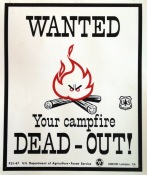

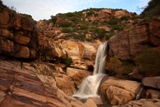
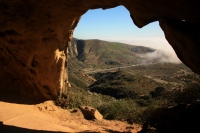

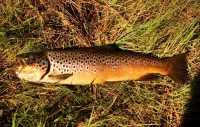


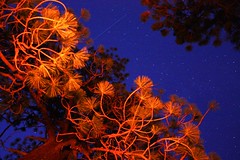








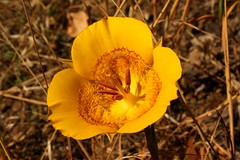









Amazing and compelling examples and speculation! Thank you for this! Those are wonderful photos of sprouted oak tree limbs.
Thanks for dropping by!
Interesting theory. I wonder what sort of population density of mammoth the area would have needed to support in order for the species to have been able to have had a significant, lasting effect on how Oaks and other species regenerate.
Speaking of oaks and their dominance of the local landscapes, I wonder to what extent local native american tribes were responsible for any of the oak trees’ success and dominance as a species. Obviously, native people had an active hand in managing their surroundings in favor of desirable food sources and forage conditions. Knowing how important the acorn was to their diet, one could expect that native peoples may have intentionally, or otherwise, helped to spread and strengthen oak populations as part of their efforts to select and control for desirable species.
On the other hand, if you’ve ever tried to pull a young oak sapling out of the ground, you’ll know that they very quickly develop a deep and tenacious tap root from the time they sprout out of an acorn. It may just be that the species is particularly well suited to surviving our boom and bust cycles of hot and dry, and cooler and wet(ter). I’d assume oaks, like pines, can survive quite a lot and bounce back when the conditions are right.
If you think about it, many of our native plants are impressively resilient to environmental stresses whether it’s fire, drought, windstorm, mammoth or maybe even pot growers. 😉
Interesting thoughts.
“If you think about it, many of our native plants are impressively resilient to environmental stresses whether it’s fire, drought, windstorm, mammoth or maybe even pot growers.”
Indeed. If you think about fire alone. It’s elemental. Something like air. It’s been around as long. Fire is an agent in evolution the response to which has been written into the DNA of plants as a matter of survival.